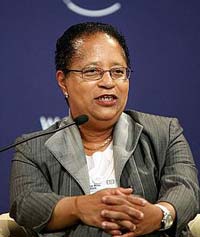
| Born: July 1, 1999 in Washington, D.C. |
| Nationality: American |
| Field: Physicist |
Shirley Anne Jackson was born in 1946 in Washington, DC. She had strict parents who strongly valued education and always encouraged her to attend school. George Jackson, her father, spurred on her interest in the science field by helping her with school projects for her science classes. Jackson attended the Roosevelt High School where she enrolled in science and mathematics programs and graduated in 1964 as a valedictorian.
She began attending classes at Massachusetts Institute of Technology (MIT) in the same year. She was one of less than 20 African American students studying theoretical physics at that time. During this time, she volunteered at the Boston City Hospital where she tutored students at Roxbury YMCA. In 1968, she earned a bachelor’s degree, writing her thesis on solid state physics that was a subject in the forefront of theoretical physics.
Career Life and Major Studies
Although Jackson was accepted at Harvard and the Chicago University, she decided to stay at Massachusetts Institute of Technology for her doctoral work as she had a desire to encourage more young students to attend the institution. For her PhD, Shirley worked on elementary particle theory, which in 1973, was complete. James Young directed her research at that time. He was also the first ever African American fully tenured professor in the institution’s physics department. Shirley’s thesis was “The Study of a Multi-peripheral Model with Continued Cross-Channel Unitarity”, which was subsequently published in 1975 in the Annals of Physics.
During her time as a post-doctoral student of subatomic particles in the 1970’s she studied and researched on a number of highly rated physics labs in the United States and Europe. She had a high interest in researching and studying hadrons at the Fermi National Accelerator Laboratory in Illinois.
She also studied medium to large subatomic particles during her time in Illinois. She concentrated on mesons and baryons subatomic particles. In 1974, she went to Switzerland’s European Center for Nuclear Research (CERN). Here, she explored various theories about the strong interaction of elementary particles. Between 1976 and 1977, she was a lecturer at Stanford Linear Accelerator Center and visited the Aspen Center for Physics as a scientist.
Achievements and Contributions
Jackson’s passion for science blossomed throughout her life. However, it is her talent for mathematics and physics and her drive to succeed that have led her to have an amazing career and make tremendous contributions to science. Her wide knowledge in neutrons, electrons and other particles has led to better scientific understanding. She has helped to solve problems in technology and benefitted several nuclear plants across the world.
In addition to other notable achievements and contributions, Shirley Jackson has served in various scientific committees as well as published over hundreds of articles and scientific abstracts. She contributed significantly to the advancement of women in the field of science. She entered the public affairs realm in 1985 through an appointment to the New Jersey Commission on Science and Technology.
To this day Jackson has received several awards in recognition of her hard work and contributions to physics and science. She is now married to another physicist, Dr. Morris, and together, they have a son, Allan.